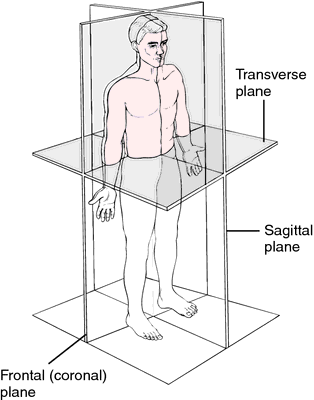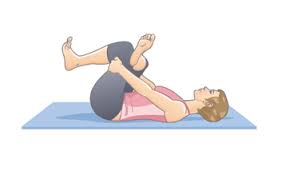When I went to my first teacher training, I was taught a sequence. My initial training with Baron Baptiste was centered around his sequence and that allowed me to focus on everything else involved in teaching, without having to also think about what I was going to teach.
This was great for me and I thought quite a wise choice because as a newer teacher it’s hard to think about what you want to string together in a sequence. And, further, what I noticed when I taught the anatomy portion of other 200 hour trainings was that new teachers (already teaching) that were in the training were telling me they were spending an hour or more before each class coming up with a new sequence, writing it down, practicing it and then bringing those notes to class.
While I love the idea of being prepared, no one should have to spend hours before each class thinking about what you’re going to teach and then creating a sequence. We have to leave room for the students that actually show up, what our assessment is once we start the class, how we assess the skill and energy level and just the idea of being present. This can be difficult if we start by boxing ourselves into a commitment to teach a particular sequence.
So, it’s a balance. We prepare, we have an intention or a shell format or structure of sorts, but we recognize that we have to leave room for what happens when we get there. This gets easier as we gain experience but even in the beginning, understanding that is part of teaching. So, let’s talk about what can go into a yoga sequence. This is just one approach and recognize that different styles and teachers will have their own approaches. This is just one idea.
Opening sequence
FOCUS: Getting grounded, present and coordinated
Description: The typical way to do this is to start with a Child’s Pose/Down Dog/ Rag Doll sequence but given what time of day you’re teaching, you may want to switch that up. For my end of day/after work classes, I like to start people on their back with a Back/Bridge x 3/ Eagle on Back and Ab Crunch sequence because that builds some awareness and coordination without the physical effort required for Down Dog (along with the hamstring flexibility).
You may also want to start them on their bellies, head resting on folded hands and move them through that to Locust x 2/ Upward Dog/ Downward Dog/Rag Doll.
The point is, decide what your starting point is and give them a few movements so they can feel a bit more grounded, present and coordinated.
Initial Movement
FOCUS: Moving through the sagittal plane (front to back)
Description: I’ve written before about planes of the body, and when we look at movements like flexion and extension, we know they occur in the sagittal plane of the body:

Sun salutations often are used here to work through this front to back plane but keep in mind, Sun salutations can be challenging for people because of the back heel being down in Warrior 1. If students have tight hip flexors, you can offer Crescent Lunge instead, where the back heel is up and then move into traditional Sun salutations.
Also, moving from High to Low Push up is one of the most challenging movements for students and there is much to it, both in terms of alignment, anatomy and key actions to suggest. I created a whole online course on the subject (you can check out here ) because I am so passionate about sharing these actions with others. So to that end, you may want to skip Low Push Up at the start and work that in after a few Sun salutation A’s and then move into bringing them to the floor completely for the first few rounds and then add in moving “halfway down.”
Specific Movements/ActionsÂ
FOCUS:Â Twists, Balances, Specific Anatomical Actions
Description:Â This is where you’d insert poses that fall into a specific movement category, such as twists or balances. It could be where you add in a few poses that focus on lengthening and strengthening hip flexors or internal and external rotation of the hips and shoulders. If you have the intention of an anatomical theme for your class, this is a good place in the sequence to emphasize that theme because your students are now warmed up and a bit more present to the task at hand.
This is also the part of the sequence where you take students through the other planes of the body, like the transverse and frontal, by adding in movements like abduction and adduction and internal and external rotation. This multi-planar movement is what makes yoga such a smart way to exercise!
Closing Sequence
FOCUS:Â Bring heart rate back to resting pace, allowing for more restful movements so the students can leave feeling restored
Description:Â This is where you will allow students a bit more time per pose, give them a bit more space (less talking) and maybe a few assists while they’re in the postures (up to you). Pigeon pose is the traditional posture used for this but it is a bit overdone (I know) as the closing pose so I always like to mix things up, even if it’s to do Pigeon on the back:

You could also end with students on the back and suggest Legs Up the Wall Pose and Hand to Big Toe Pose to lengthen hamstrings and add in Happy Baby. In any event, this should be a time to slow down and not exert a ton of effort. Having said that, these poses still have a shape to them so if you see students in these poses and they are sitting in their joints or leaning to one side versus the other, suggest a mild shift with a light assist to bring a bit more integrity to the shape.
I provide an entire section on specific anatomical sequences as well as assisting in the final portion of my 200 page anatomy manual called the Bare Bones Yoga Guide to Anatomy:

This manual is described here and will take you through a soup to nuts overview of anatomy for yoga teachers.Â
If you’ve read this far and liked what you’ve read, you might be interested in buying it. It sells for $65 (plus $5 US shipping) on my website but for the first 5 people that send me an email to karen@barebonesyoga.com with the subject line: “Anatomy Manual” I will send it to you for $50. I’ll invoice you via Pay Pal. ** Don’t order this off the site as you’ll pay full price.
Thanks for reading!Â
